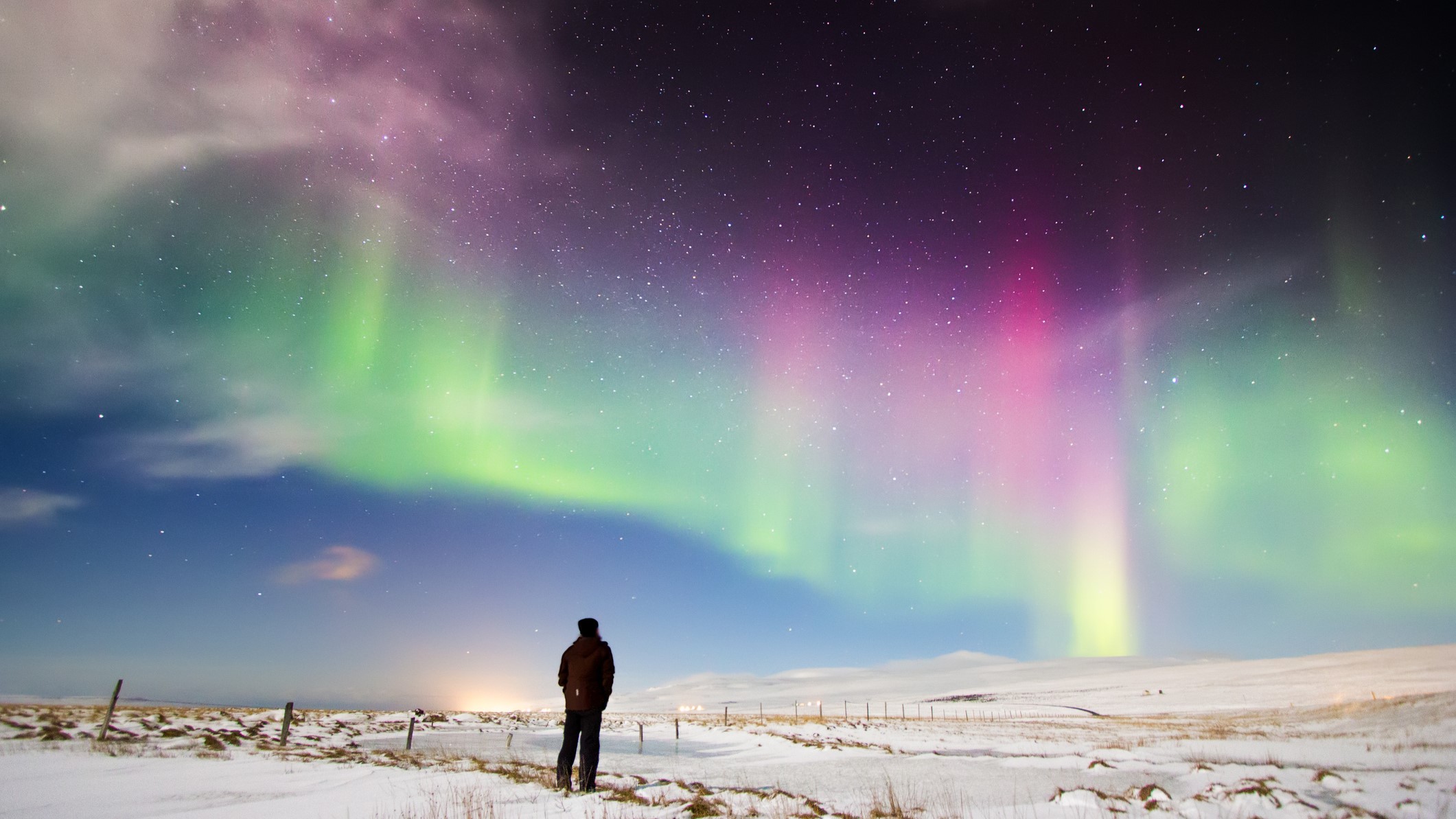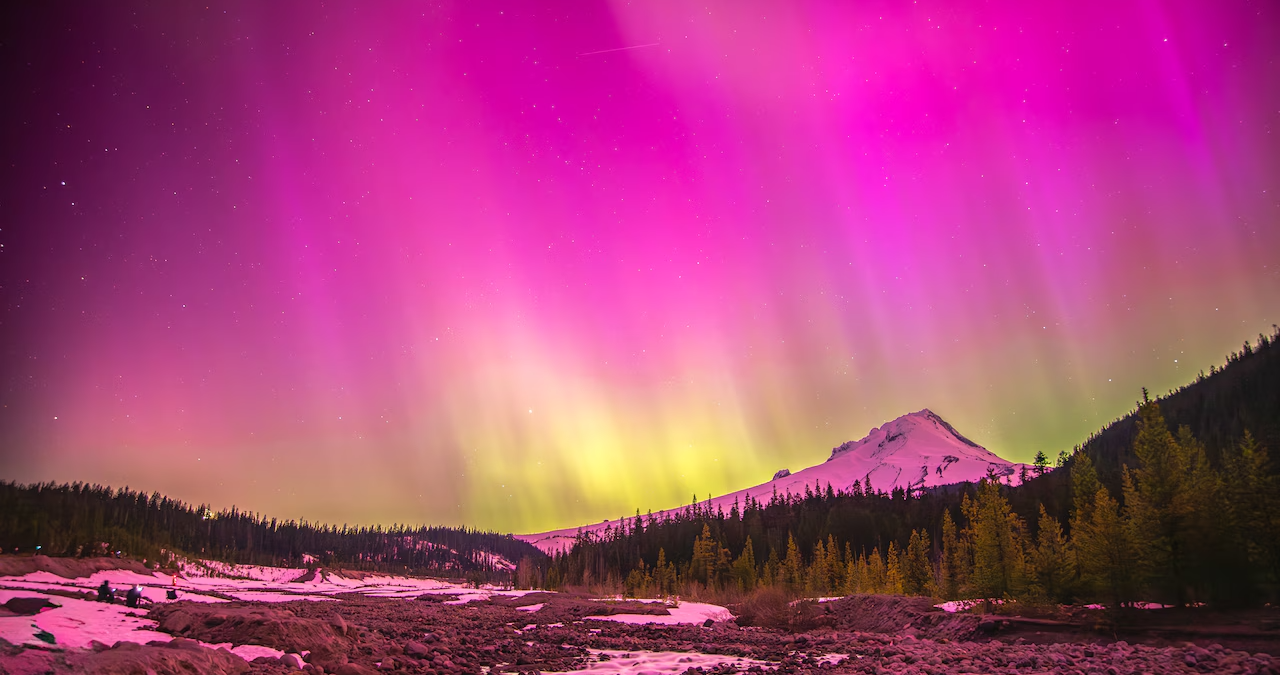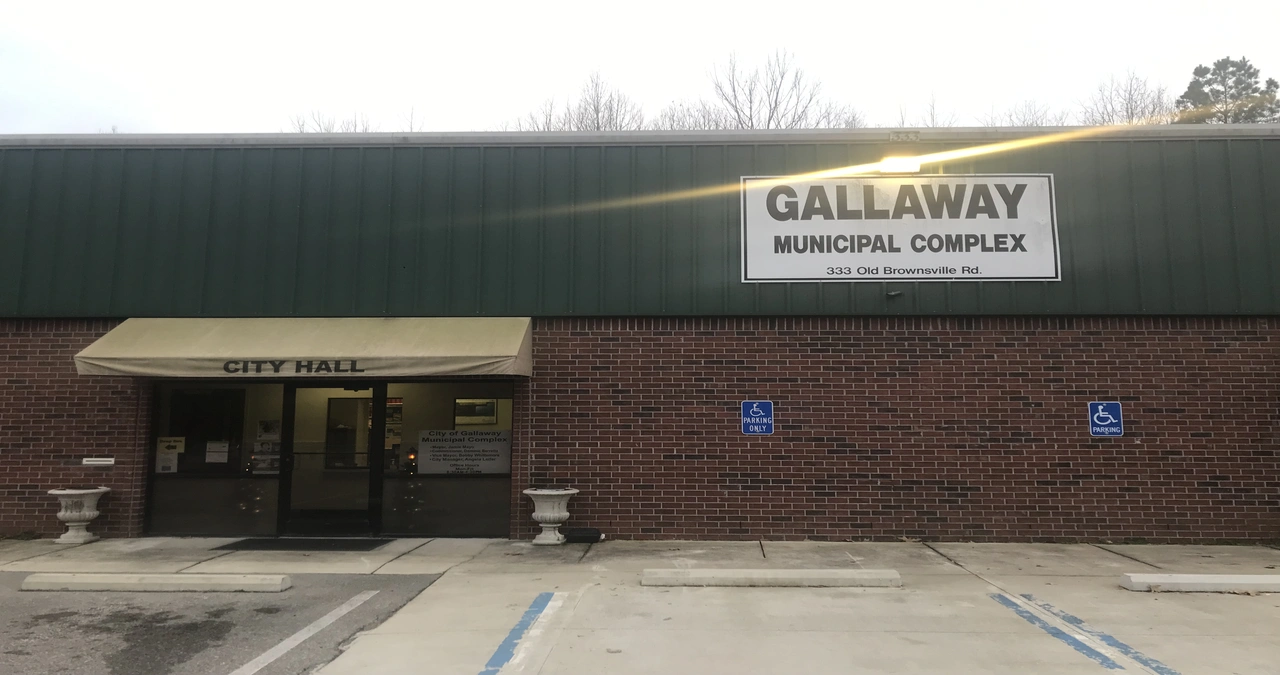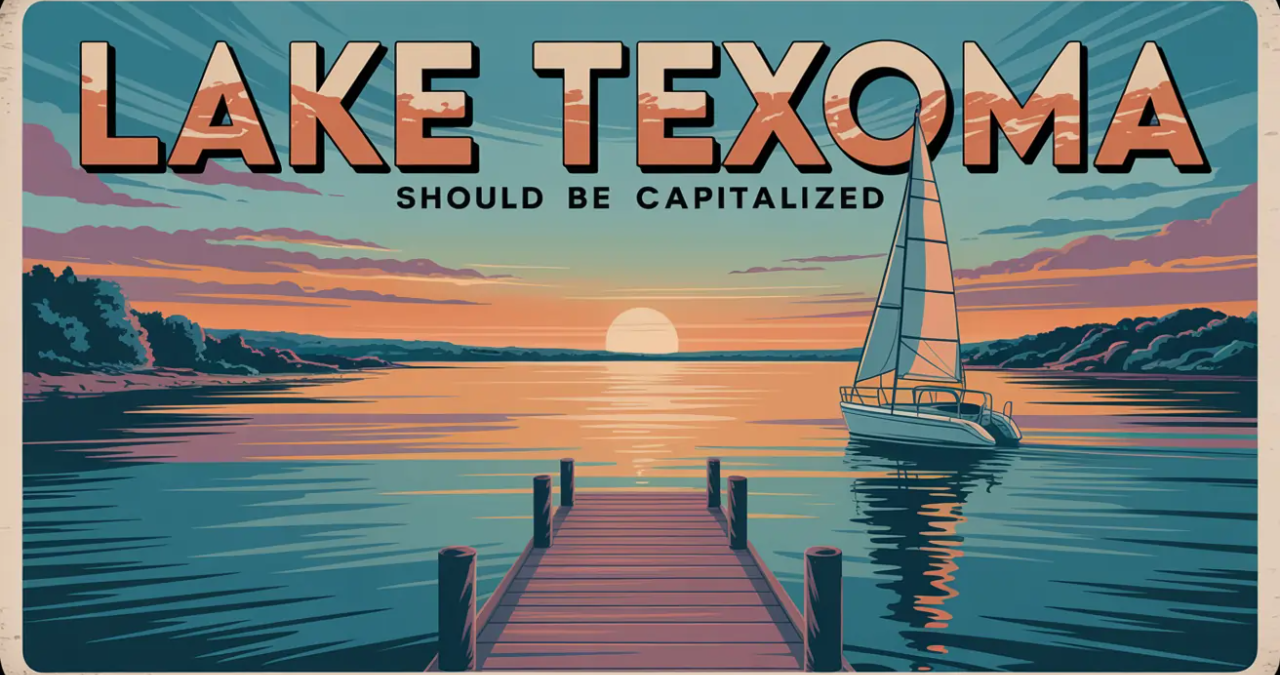Discover how to see the Northern Lights Oregon, including best locations, times, tips, and FAQs. A complete guide to experiencing this rare natural wonder in the Pacific Northwest.
The Northern Lights in Oregon are one of the most awe-inspiring natural wonders that occasionally grace the skies over the Pacific Northwest. While Oregon might not be the first place that comes to mind when you think about the aurora borealis, there are rare but absolutely breathtaking nights when the skies light up in vibrant hues of green, purple, and red.
Experiencing the northern lights in Oregon is something magical, and it combines the state’s rugged landscapes with cosmic phenomena that leave both amateur stargazers and seasoned photographers speechless. While not a common occurrence, with the right conditions, location, and timing, you can absolutely catch this celestial light show without heading to the Arctic Circle.
What Are the Northern Lights?
The northern lights, scientifically known as aurora borealis, are a result of solar particles colliding with the Earth’s magnetic field. These collisions create energy bursts in the form of light, which we see as colorful waves dancing across the sky.
In simpler terms, the sun emits charged particles that travel through space. When these particles reach Earth and interact with the planet’s magnetic field, particularly near the poles, they create the vivid, shimmering curtains of color known as auroras. It sounds like science fiction, but it’s very real—and very beautiful.
You don’t need to be an astronomer to appreciate this phenomenon. Once you witness the northern lights in Oregon, you’ll realize it’s a bucket-list-worthy experience that you didn’t know was possible so close to home.
Can You Really See the Northern Lights in Oregon?
Absolutely, but with a few caveats. Oregon is not inside the Arctic Circle like Norway or Alaska, which are well-known hotspots for auroras. However, under specific conditions—usually strong solar storms—these lights do become visible further south.
In fact, during periods of heightened solar activity, people across Oregon, especially in darker, less light-polluted regions, have reported vivid sightings. Locations in eastern and central Oregon, where the skies are clearer and cities are sparse, offer better chances to catch the northern lights in action.
Don’t expect to see them every weekend, though. These displays are somewhat rare and require you to be ready and willing to travel on short notice. But the payoff? Absolutely worth it.
Best Places to See the Northern Lights in Oregon
Not every part of Oregon is created equal when it comes to catching this dazzling light show. If you’re serious about witnessing the northern lights in Oregon, you’ll want to escape city lights and head somewhere remote.
Steens Mountain
This remote range in southeastern Oregon offers clear skies and minimal light pollution. Its high elevation also gives stargazers an edge when solar activity hits.
Camping up on Steens Mountain during a geomagnetic storm can be a transformative experience. Bundle up, bring a tripod, and get ready to be stunned.
Alvord Desert
The Alvord Desert is one of the most underrated places in Oregon, and it’s perfect for aurora viewing. Flat terrain, zero light pollution, and open skies make this a prime viewing spot when solar activity is strong.
Plus, camping in the desert under a sea of stars with the potential of northern lights overhead is the kind of thing that creates lifelong memories.
Crater Lake National Park
Crater Lake, already a gem for nature lovers, has been a surprise location for occasional aurora sightings. The reflections of the lights on the deep blue waters of the lake can create a surreal effect.
Just make sure to check road conditions if you’re visiting in winter months.
When Is the Best Time to See the Northern Lights in Oregon?
Catching the northern lights in Oregon is all about timing. While technically they can happen year-round, the best viewing conditions generally fall between September and April.
That’s because the nights are longer and darker during this period, giving you more opportunity to spot the lights. You’ll want to pay attention to space weather forecasts. When a geomagnetic storm is predicted, you might have a chance to witness the northern lights.
Solar activity usually peaks every 11 years, and during those peak periods, even places like Oregon can see a dramatic increase in auroral displays. Right now, we’re approaching one of those solar maxima, so your odds are better than ever.
How to Increase Your Chances of Seeing the Northern Lights in Oregon

This is not a spontaneous experience unless you’re extremely lucky. Northern Lights Oregon Planning, preparation, and patience are key.
Monitor Solar Activity
Websites and apps like NOAA’s Space Weather Prediction Center or Aurora Alerts give real-time updates on solar activity and geomagnetic storms. Look for a KP index of 6 or higher, which means the aurora might be visible as far south as Oregon.
Get Away From Light Pollution
Cities like Portland and Eugene are beautiful but far too bright. You’ll need to head to more remote areas with dark skies. The darker the surroundings, the more vibrant and clear the aurora will appear.
Be Ready at Night
Auroras typically show up late at night or in the early morning hours, between 10 p.m. and 2 a.m. Dress warm, bring a chair, maybe some hot coffee, and wait patiently.
Watch the Weather
Clear skies are essential. Even the most brilliant aurora won’t shine through thick cloud cover. Use weather apps to pick the clearest night.
Photography Tips for Capturing the Northern Lights in Oregon
If you’re lucky enough to catch the northern lights, you’ll definitely want to capture the moment. But it’s not as simple as pointing your phone at the sky.
Use a DSLR or mirrorless camera with manual settings. A wide-angle lens with a low f-stop (like f/2.8) works best. Keep your ISO high (800-3200), use a tripod, and take long exposures—anywhere from 5 to 30 seconds depending on light conditions.
Also, bring extra batteries. Cold weather drains them quickly, and nothing’s worse than your camera dying mid-display.
Local Communities and Events
Some Oregon towns, especially those with stargazing reputations, have started hosting events or at least sharing alerts when aurora activity is possible.
Places like Bend or La Pine often share northern lights alerts on social media. Astronomy clubs across the state also hold night sky viewing parties, which are great opportunities to meet other skywatchers and share tips.
Check out local observatories or science centers—many offer aurora-viewing events during peak solar storm windows.
A Table of Top Northern Lights Viewing Spots in Oregon
| Location | Why It’s Great | Accessibility |
|---|---|---|
| Steens Mountain | High elevation, dark skies | 4WD recommended |
| Alvord Desert | Flat terrain, zero light pollution | Remote, needs planning |
| Crater Lake | Unique reflection views, high elevation | Seasonal road closures |
| Mt. Hood Meadows | Easily accessible, still fairly dark | Winter best |
| Hart Mountain | Wildlife refuge, great dark sky zone | Backcountry access |
Quotes from People Who Have Seen the Northern Lights in Oregon
“It was like the sky was dancing just for us. I never imagined seeing the aurora without going to Alaska.”
— Rachel, Bend, OR
“I drove out to the Alvord Desert on a tip and ended up seeing the most vibrant greens and purples I’ve ever seen in the sky. Unreal experience.”
— James, Portland, OR
“Crater Lake was already magical, but seeing the northern lights reflected on it? That was next level.”
— Tara, Eugene, OR
FAQs About Northern Lights in Oregon
Can you see the northern lights in Oregon every year?
Not necessarily. It depends on solar activity. Some years, they’re visible multiple times; other years, not at all.
What is the KP index I keep hearing about?
The KP index measures geomagnetic activity. The higher the number (especially 6+), the more likely the northern lights can be seen further south.
Are northern lights in Oregon visible with the naked eye?
Yes, especially during strong solar storms. But sometimes they appear faint and may be better captured in photos.
When is the best month to see the northern lights in Oregon?
Generally between September and April, with the darkest, clearest nights offering the best chances.
Do I need special equipment to see them?
Not really. Just your eyes and a dark, clear sky. But for photography, a tripod and DSLR are highly recommended.
Is it safe to camp in remote areas while chasing the northern lights?
It can be, as long as you’re prepared. Bring proper gear, let someone know your plans, and follow local guidelines.
Conclusion: A Sky Full of Wonders
Catching the northern lights in Oregon isn’t guaranteed, but the thrill of the chase and the occasional payoff make it all worth it. With the right timing, planning, and a little bit of cosmic luck, you can witness one of nature’s most spectacular shows right here in the Pacific Northwest. Whether you’re a casual stargazer or a dedicated aurora hunter, keep your eyes on the sky—because magic sometimes happens where you least expect it.




